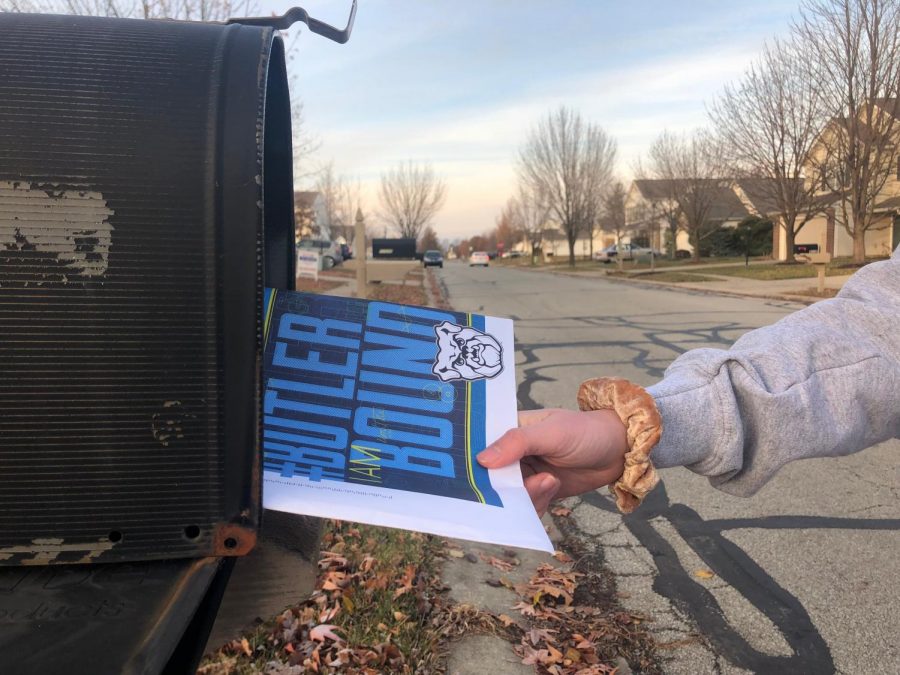Road to College: A look into the process
Senior Safina Beaty receives her Butler acceptance letter in the mail on Dec. 3.
Sighing in defeat, I refresh my email for what seems like the hundredth time that week. Like most seniors, December is a month of waiting impatiently for colleges to mail acceptance letters. During this time I began thinking about what exactly was going on behind the scenes of the entire process, so I reached out to admissions officers and a career counselor to figure it out.
Nearly every college website stresses the importance of grades, test scores and extracurricular activities. However, many schools are moving towards what they call a “holistic approach” to reviewing applications.
“They look at the look at the entire application and try to look at all parts of the student,” college and career counselor Linda Brown said. “Primarily they look at the classes the student took in school and the grades they get in those classes, but they also look to see if students took advantage of the opportunities they had available to them in their school.”
With the rise of the holistic approach, more schools, such as the University of Chicago and the University of Iowa are test-optional, meaning applicants can decide whether or not to submit their scores. Ball State is one Indiana school that recently went test-optional.
I also learned that colleges cannot view applications until all required material is submitted, but even then, applications are typically not viewed until weeks after they come it. Also, admissions counselors have limited time to view each application.
“The time we spend on each application truly depends on the complexity of the transcript, the materials the student submitted within their application as well as other factors we need to consider for that specific student,” Associate Director of Admissions of Ball State University Lindsey Speer said. “Each application is reviewed individually but on average we typically spend less than five minutes on an application.”
Since state schools receive a large number of applications, they tend to focus on basics such as grades and test scores. However, smaller private schools pay more attention to a student’s personality and interests since they can only accept a select amount.
“Colleges would rather see a student have a couple of things that they’re really dedicated to and things that they are passionate about and spend their time there instead of an hour here and an hour there,” Brown said. “That’s still good, but it doesn’t show leadership or commitment.”
There is also a difference in the way applications to different schools within a college are screened. If a student is applying to a more popular and competitive major, their application is often viewed more closely than applications to less competitive majors.
“It would be impossible for us to create an algorithm to put an application through to determine the decision because each application has human pieces to them and most importantly the student behind the application,” Senior Associate Director of Purdue University Office of Admissions Megan Dorton said.

This is Carson's second year on staff and first year as the Arts & Culture editor. She loves to read, write, and travel and is very excited for the year.







